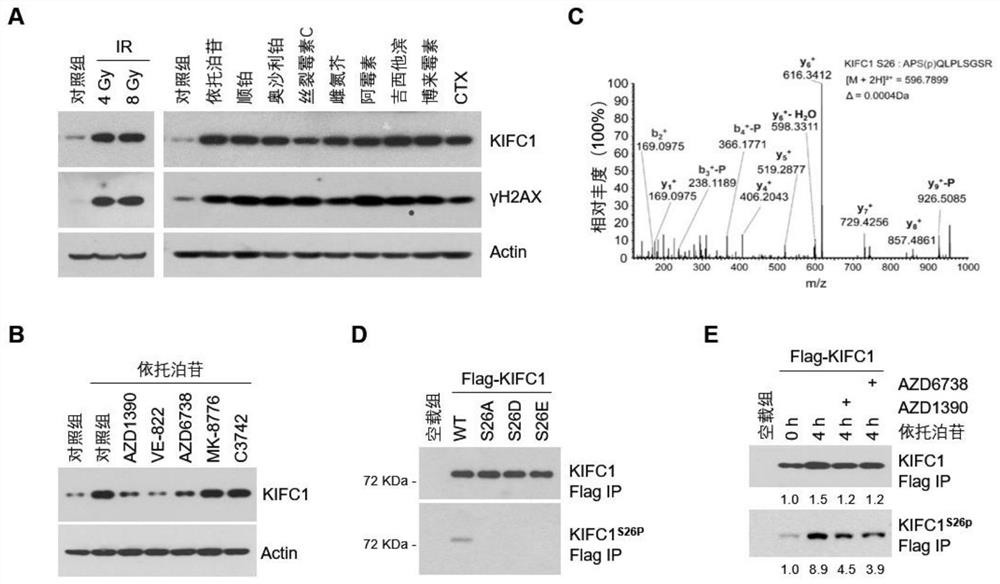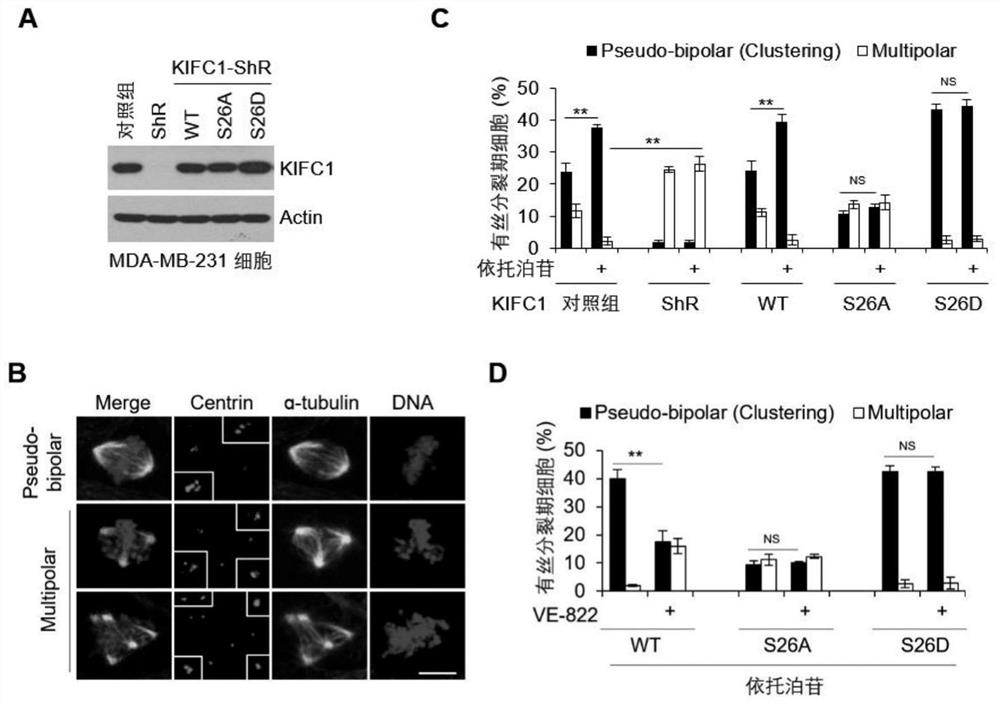Marker KIFC1 for predicting drug resistance and recurrence of tumors and inhibitor thereof and use of marker KIFC1 and inhibitor thereof
A marker and inhibitor technology, which can be used in anti-tumor drugs, drug combinations, biochemical equipment and methods, etc., and can solve problems such as genomic instability
- Summary
- Abstract
- Description
- Claims
- Application Information
AI Technical Summary
Problems solved by technology
Method used
Image
Examples
Embodiment 1
[0067] Example 1 In breast cancer and colon cancer tumor tissues, the amount of KIFC1 protein was significantly positively correlated with tumor recurrence rate.
[0068] Human breast cancer tissue chips were purchased from Shanghai Xinchao Biotechnology Co., Ltd. (HBreD140Su04). Colon cancer tumor tissue chips were purchased from Shanghai Zhuohao Pharmaceutical Technology Co., Ltd. (COC1601). Clinical data can be downloaded from the relevant company websites. The amount of KIFC1 protein was divided into three groups according to the degree of staining (low, 0–4 points; medium, 5–8 points; high, 9–12 points) [14]. To ensure statistical authenticity, these data were performed in a double-blind manner Scoring and counting.
[0069] Among them, the tumor tissue was collected and processed uniformly by the company, and the relevant experimental process, parameter conditions, and measurement process were consistent with standard immunohistochemical experiments [15]. Among them, ...
Embodiment 2
[0072] Example 2 Screening of KIFC1-specific sites and antibody preparation thereof.
[0073] The experiment was performed in MDA-MB-231 breast cancer tumor cells. Experiments such as Western blot, Flag IP and mass spectrometry are all routine molecular biology and cell biology experiments. Relevant chemotherapy drugs were purchased from MedChemExpress (Monmouth Junction, NJ, USA). Antibodies used included KIFC1 (HPA055997, Sigma-Aldrich), anti-γH2AX (ab26350; Abcam), Flag (F3165; Sigma-Aldrich) and β-actin (A5316; Sigma-Aldrich), which were commercially available For existing antibodies, the specific information can be clearly identified according to the relevant number. These antibodies were the experimental material used in the discovery process of the present invention.
[0074] Experimental results: In this example, it was found that DNA damage-based radiotherapy and chemotherapy would lead to an increase in the amount of KIFC1 protein ( figure 2 A), and related inhib...
Embodiment 3
[0075] Example 3 ATM / ATR inhibitor VE-822 inhibits excess centrosome aggregation through KIFC1.
[0076] Related immunofluorescence experiments were carried out in breast cancer MDA-MB-231 cells. Antibodies used included γ-tubulin (T5326; Sigma-Aldrich), Centrin (C7736; Sigma-Aldrich), and α-tubulin (T5199; Sigma-Aldrich).
[0077] On the basis of the MDA-MB-231 cells of KIFC1 gene silencing, the present invention first established the wild type (WT), the simulated S26 dephosphorylation state (S26A) and the simulated S26 phosphorylation state (S26D) cell lines of KIFC1 ( image 3 A). DNA damage resulted in significantly increased centrosome clustering and significantly reduced multipolarmitosis.
[0078] Experimental results: In the KIFC1-S26A cell line, the ratio of excess centrosome aggregation / multipolarization was significantly reduced. In the KIFC1-S26D cell line, the ratio of excess centrosome aggregation / multipolarization was significantly increased. In the KIFC1-S2...
PUM
 Login to View More
Login to View More Abstract
Description
Claims
Application Information
 Login to View More
Login to View More - R&D
- Intellectual Property
- Life Sciences
- Materials
- Tech Scout
- Unparalleled Data Quality
- Higher Quality Content
- 60% Fewer Hallucinations
Browse by: Latest US Patents, China's latest patents, Technical Efficacy Thesaurus, Application Domain, Technology Topic, Popular Technical Reports.
© 2025 PatSnap. All rights reserved.Legal|Privacy policy|Modern Slavery Act Transparency Statement|Sitemap|About US| Contact US: help@patsnap.com



